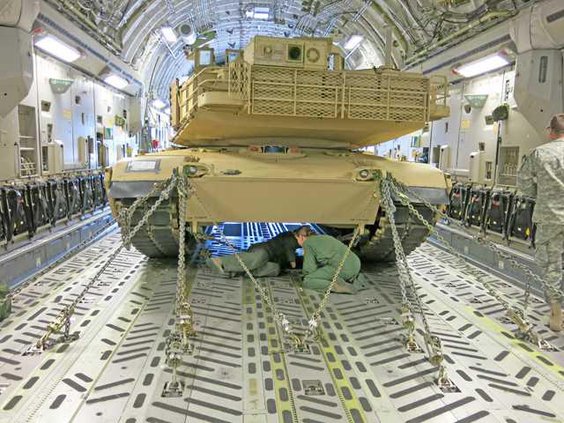Despite a clear blue sky, Liberty County residents heard “thunder” Thursday and Friday. Those who looked skyward found the source of the thunder was a C-17 Globemaster landing and taking off from Wright Army Airfield.
The two-day exercise was conducted by the Air Force Reserve’s 315th Air Mobility Command, which is based in Charleston, and the South Carolina Army National Guard’s 1st Battalion 118th Infantry Regiment, which is based at McEntire Joint National Guard Base in Columbia.
Bill Phipps, manager of Wright AAF/Midcoast Regional Airport, said the successful exercise debunks the myth that Wright’s 5,000-foot runway isn’t long enough for large planes.
“Our runway is just over 5,000 feet long,” Phipps said. “I know because I’ve walked off every foot of it. The C-17 only needs about 3,000 feet to take off and land. This exercise is the very first time we’ve landed a C-17 here. And when it takes off, it’ll be loaded with an M1 (Abrams) tank.”
Lt. Col. Lamar Thigpen, a C-17 instructor pilot and commander of the Air Mobility Command, said the C-17 was made for runways like Wright AAF. He admitted Wright’s runway isn’t long enough for large civilian passenger planes but said an additional 1,000 feet added to the runway would accommodate most commercial planes. Recently, the Georgia General Assembly approved $8 million for the Airport Aid Program. According to Liberty County Development Authority attorney Jimmy McDonald, $1 million of that money is slated for Midcoast Regional Airport to help pay for extending the runway by 1,500 feet.
Thigpen said the joint exercise was training for real-world scenarios where heavy equipment, such as tanks, can be picked up at small stateside airfields like Wright then flown to the theater of operation with only one in-flight refueling. The exercise also allowed guardsmen and reservists to practice for natural-disaster operations that might require delivery of needed medical equipment and personnel to a remote area where the only available airfield is no bigger than Wright AAF.
“This operation here is a tremendous training opportunity,” said Thigpen, a Statesboro native. “(The C-17) is an incredibly robust airplane. It can do almost everything a C-130 can do and carry five times the weight.”
Thigpen told journalists that he originally wanted to be a C-130 pilot, but he’s now grateful that he flies the C-17 and trains other airmen to be C-17 pilots. He said there are more than 200 C-17 Globemasters in the total force, which includes the active-duty Air Force, Air Force Reserve and Air National Guard units. The aircraft has been used extensively during operations in Iraq and Afghanistan.
Maj. David Fowler also talked with media just before his troops loaded an Abrams tank onto the first C-17 after it landed around 10 a.m. and taxied in front of the air-traffic-control tower. He said his team of 21 soldiers would have an opportunity to work with the Air Force loadmasters in loading a tank then securing it inside the huge aircraft.
“This is a unique opportunity for our soldiers,” Fowler said. “They’ll get to do something they haven’t had a chance to do in quite some time. They’re motivated and energized to do this.”
The tank was backed out of the hangar area onto the tarmac, where it was guided up the ramp into the rear of the C-17. America’s main battle tank backed slowly up the ramp inside the aircraft then shut down its engine. It then was carefully secured to the floor of the aircraft with heavy chains by soldiers and loadmasters. With the extra personnel, Fowler said they were about to secure the tank in three-quarters the time it usually would take.
At 1 p.m., the loaded C-17 taxied back onto the runway and took off with ease, despite its heavy load. Minutes later, a second C-17 landed then taxied into position to be loaded with a tank.
The first aircraft was slated to fly to Waycross, where it wound link up with an aerial refueling plane for a simulated refueling exercise. He said they wouldn’t actually refuel the C-17 because they didn’t need the extra fuel to fly back to Charleston. Thigpen said the same landing, loading, take-off and aerial refueling operations would be repeated Friday.
'Thunder' on a cloudless day
Huge C-17 Globemaster lands at Wright


Sign up for our e-newsletters